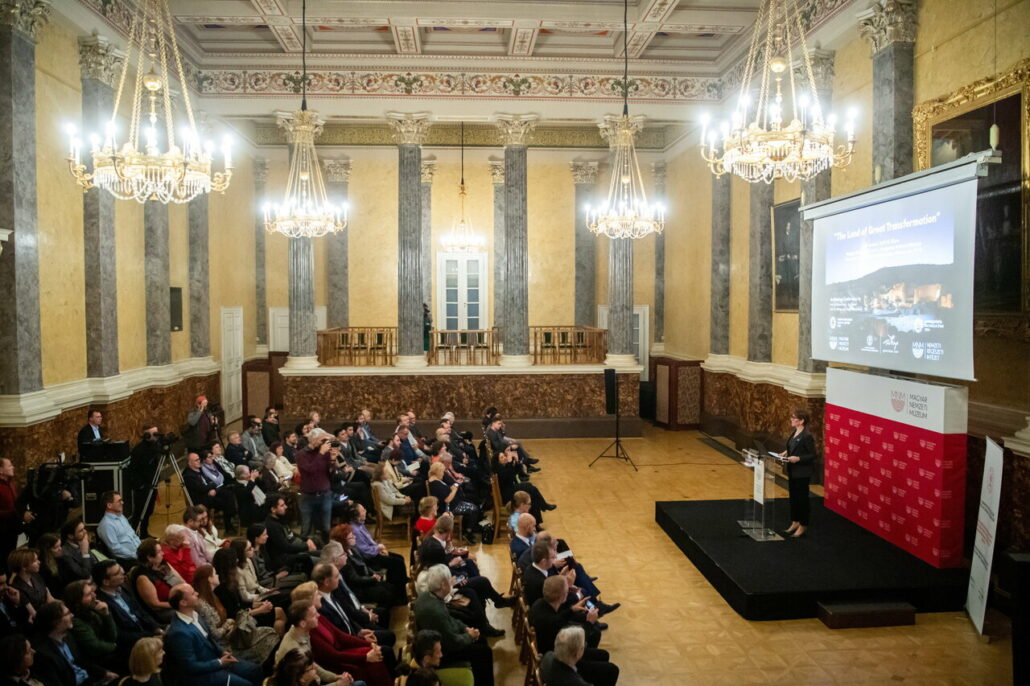Karahantepe’s excavations open up new horizons in archaeological research
As the first official event of the 2024 Hungarian-Turkish Cultural Year, an archaeological conference entitled The Land of Great Transformation was held on Thursday at the Hungarian National Museum.
The sculptures and architectural elements found in Turkiye date back to the Mesolithic period. Archaeologists excavating at Göbeklitepe and Karahantepe have uncovered several new monumental statues and architectural elements. Karahantepe, one of the world’s oldest Neolithic sites, has been attracting attention for its archaeological findings.
The place was recognised as one of the nine most important “Field Exploration and Research” projects of 2023 at the Shanghai Archaeology Forum in China. The nine projects were selected from 973 evaluations submitted by participants from 32 countries.
As it is known, 2024 was declared as a mutual cultural year in Turkey and Hungary due to the 100th anniversary of the Turkish-Hungarian Friendship Treaty signed in 1923. In this context, in order to contribute to the Turkish-Hungarian Year of Culture activities and to promote the Stone Hills Project in Hungary, an archaeology conference titled “The Land of Great Transformations” was organized by the Turkish Tourism Promotion and Development Agency on January 18, 2024 in Budapest, the capital of Hungary.
Prof. Necmi Karul, Head of the Department of Prehistoric Archaeology at Istanbul University, and Prof. Pál Raczky from Hungary participated in the conference, which will be held in partnership with the National Institute of Archaeology of the Hungarian National Museum, to make presentations on the Stone Hills Project and Karahantepe excavations.
The event will be hosted by Gülşen Karanis Ekşioğlu, Ambassador of Turkey to Hungary, and Dr. Judit Hammerstein, Acting Director General of the Hungarian National Museum. The opening speech of the conference will be delivered by Dr. Péter Hoppál, the government delegate responsible for the preparation and implementation of the Hungarian-Turkish cultural year.

Gülşen Karanis Ekşioğlu, Ambassador of Turkey to Hungary. Source: MTI
Dr. Gábor Virágos, Deputy Director General of Archaeology at the Hungarian National Museum and President of the National Archaeological Institute, will moderate the conference. The event will be attended by representatives of Hungarian academia, research institutes, museums and universities, press and social media opinion leaders, as well as representatives of the travel industry from Hungary. Following the conference, a reception and a digital exhibition featuring images of the Stone Hills and Göbeklitepe finds will be organized at the same venue.
Göbeklitepe and Karahantepe stirred global archaeological circles with the latest findings unearthed in October 2023. Within the scope of the “Taş Tepeler” Project, Karahantepe is among those sites that have given us a deeper understanding of prehistory. According to excavations, Karahantepe is much older than Göbeklitepe, so far called the world historical ground zero.
These ground-breaking discoveries included the largest known human statue of the period, unearthed in Karahantepe. An outstanding example of prehistoric art is the 2.45-metre-tall figure sitting on what appears to be a bench, which is believed to depict a male. The statue’s seated position evokes a living person, featuring a realistic facial expression, while the emphasis on its shoulder bones and ribs suggests death. Adjacent to the human figure is a lower ledge upon which stone plates and a vulture statue were placed, indicating that the structure was built for special purposes.
Additionally, during excavations conducted by İstanbul University on behalf of Türkiye’s Ministry of Culture and Tourism, a life-size limestone statue of a wild boar was found in Structure D at Göbeklitepe, dating from the same period as Karahantepe. Featuring traces of red, white, and black pigments on its surface, the wild boar is the first full-scale painted sculpture of its period to survive to the present day.
It was found on a bench decorated with an H-shaped symbol, a crescent moon, two snakes, and three human faces or masks. The archaeological site of Göbeklitepe, about 12 kilometers from the Şanlıurfa city centre, is one of the most important heritages of human history. As Türkiye’s 18th UNESCO World Heritage Site, Göbeklitepe has significantly altered perceptions of hunter-gatherer societies such as in the Neolithic Age.
You can find more information about the project on the following link: https://tastepeler.com/
Read also:
please make a donation here
Hot news
What happened today in Hungary? — 1 May, 2024
Budapest mayoral candidate of Fidesz promises clean, organised Budapest
New night service from this Hungarian city to Warsaw!
Von der Leyen: Hungarians made Europe stronger, Hungarian commissioner: This is not the EU we dreamt of
Trains and buses in Hungary now easier to track real-time!
Hungary celebrates its 20th anniversary of European Union membership




